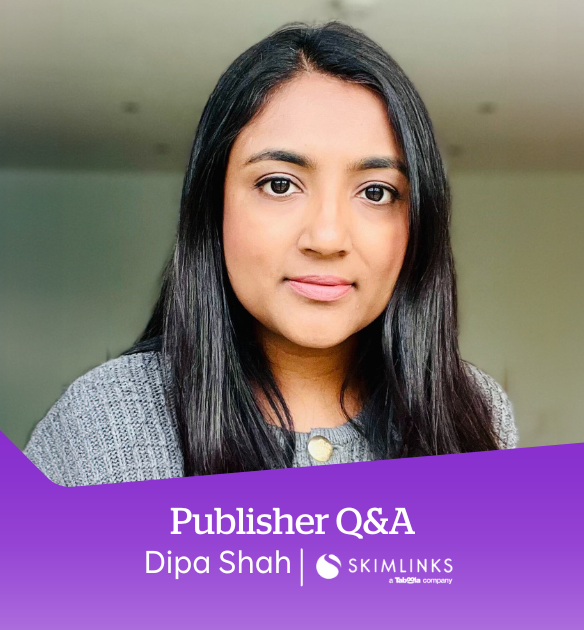Maximising the Impact of an Advertising Strategy
Five tips to maximise the impact of an advertising strategy was guest authored James Collins, SVP of Media Networks at Rakuten Advertising and first appeared in NetImperative.

Five tips to maximise the impact of an advertising strategy was guest authored James Collins, SVP of Media Networks at Rakuten Advertising and first appeared in NetImperative.
Take yourself back to 9am this morning. What are you doing? Where? What’s your mindset and how were you feeling at the time? Now, think of 9pm last night and ask yourself the same questions.
Chances are (unless you’re chronically overworked), your state of mind and your emotional state were different in both these incidents – you are different versions of you throughout your day. And the same is true of every person within your target audience.
An individual’s receptiveness to messages and suggestion is based on mood: a state which is fluid, never static. This is also true for advertising and brands should consider this when devising their strategies, campaigns and media plans for reaching audiences.
With this in mind, here are five tips on how this approach can be integrated into a wider broadcast strategy to make a campaign even more effective.
Understand a life in ‘Moments
The time spent within these moods can be thought of as ‘Moments’ – a period of time which is far from momentary; it may be the length of a blockbuster, a sports documentary, or an episode of the latest must-watch series. Equally, it can just as easily be the hours that a couple spend on the sofa binge-watching the entirety of the boxset itself.
It’s in these ‘Moments’ that a brand truly wants to connect. The targeting and placement offered by Connected TV (CTV) advertising inventory makes it the premier platform for aligning a brand with its audience when it truly matters, and when the appetite and mindset is there to resonate best. In this way, brands can think more strategically and use a ‘Moments’-based approach to complement their traditional broadcast spend.
Consider how to engage the 21% of viewers who are ‘beyond reach’
Traditional live, linear broadcast ad spend is currently much greater than that spent on CTV advertising. This is reflective of how broadcast has historically dominated media buying; a result of both its legacy as the only way to advertise on TV, as well as its suitability for brand awareness at scale. It works – albeit to a finite extent given media consumption habits.
Our 2020 report into Advertising-based Video On Demand (AVOD), found that across Europe as many as 21% of the consumer audience (20% in the UK), are streaming but aren’t watching live TV. These cord-cutters are therefore inaccessible through a linear broadcast TV advertising model.
We can expect to see more investment in CTV over the next few years and there needs to be increased consideration of how to engage with the 20% using a comparatively smaller budget allocation.
Which brings me to…
Make the most of context
Imagine you’re pulling together an advertising campaign for an indulgent yet affordable high street skin care product, with a target audience of young, health-conscious, women with a fair amount of disposable income. As a media planner, you can safely assume that you’re reaching the right audience using traditional, frequency-driven, brand awareness strategies to create recognition and consideration.
But you now have the opportunity to build in a contextual positioning layer through CTV. A viewer will have explicitly chosen to watch a cosy 12A romantic comedy, for example, because that is the mood they are in at that time; while on linear TV they may have stumbled across it – it doesn’t guarantee the Moment that CTV does. As such, the advertiser can be pretty confident the advert appearing within the romcom is aligned to the emotional context the audience is in, and therefore is at their most receptive to it.
It elevates a brand awareness strategy, through a combination of demographic data with demographic understanding, and a subsequent consideration of how the latter can augment the former. The profile of the consumer isn’t enough on its own – the scenario they’re in must be a consideration to make reduced budgets smarter.
Identify where budget efficiencies can come from
A ‘Moments’-based approach to media planning will bring significant budget efficiencies when integrated atop a traditional broadcast model. This is because CTV offers a more identifiable window to align advertising to the content being watched and therefore the mood the audience is in at that time.
While predictions forecast an increased advertising spend in 2021 (in doing so, promising signs of recovery from the problems caused by the pandemic), the disciplined use of budgets has taught the industry how to make them work harder. These lessons can be carried forward and the same models can bring higher rewards – an opportunity Moments definitely brings to the table.
The decision to make budgets work harder, campaigns resonate better, and brands be better remembered isn’t a difficult one to make, and it doesn’t involve ripping up the rulebook.
Use emotional resonance for Logical Action
As humans we often respond emotionally before logically – or, as Daniel Kahneman put it in the bestselling ‘Thinking Fast and Slow’, System 1 and System 2 modes of thought respectively. We respond quickest – instantaneously, subconsciously – at an emotional level, before conscious thought takes over. As such, advertising is always undertaken at an emotive level to begin with; a gateway as it were.
Advertising functions as a response to System 1 thinking, in terms of how it grabs the attention and then informs a consideration. ‘Moments’ reflect this journey too, but through being contextually-based alongside the mood the viewer is in, the initial connection can be heightened.
A widespread advertising campaign for a major sports brand will drive awareness among its customers through repeated exposure across an integrated mobile, TV, print, online, OOH strategy. Repetition fosters recognition and connection, but a Moments-based CTV strategy can elevate this through adding a more powerful, more refined emotional siting of the brand.
For more information on maximisng the impact of an advertising strategy download our guide or speak to one of our experts here.


